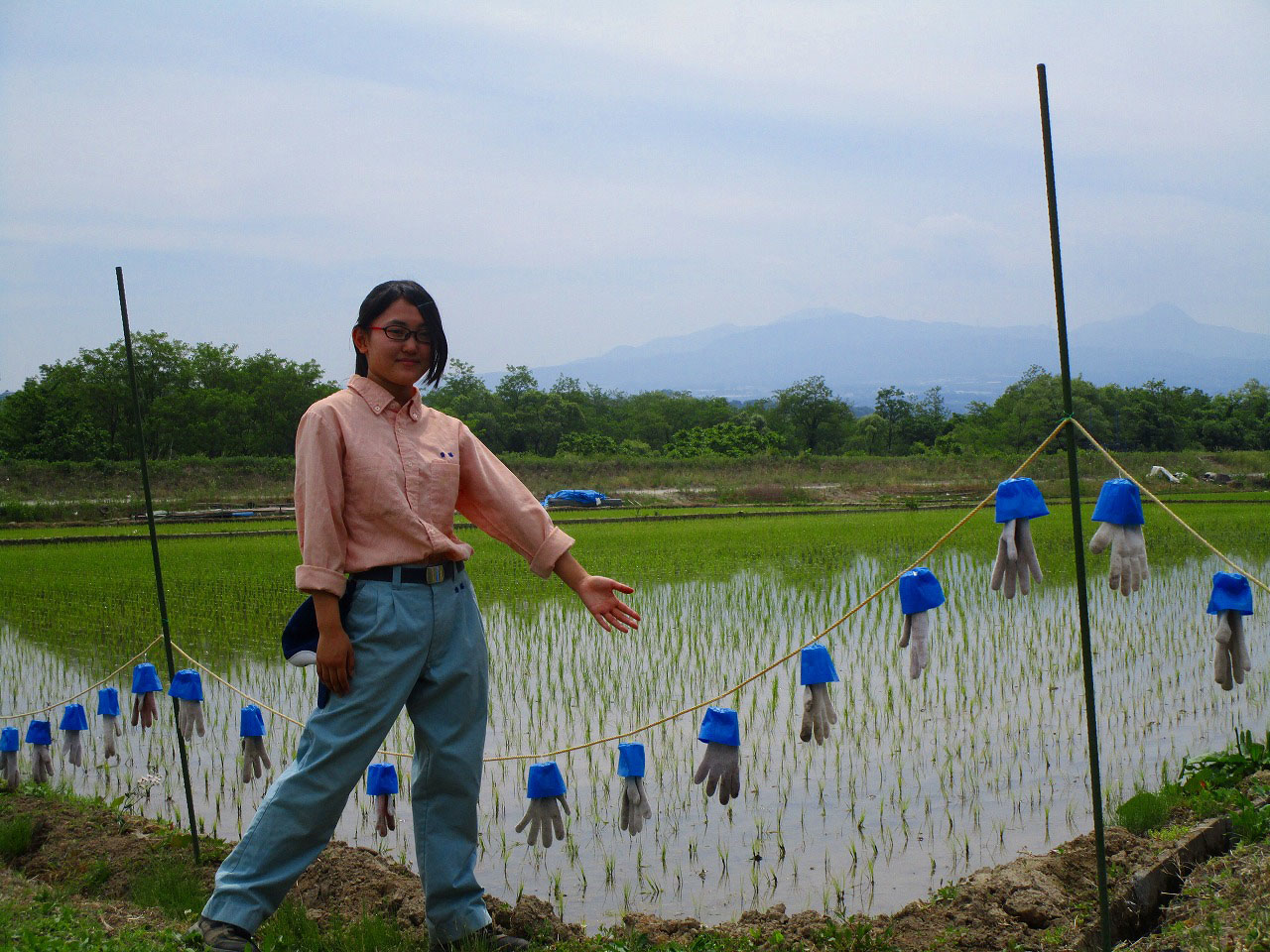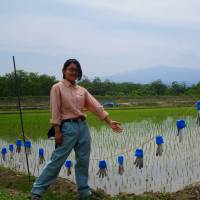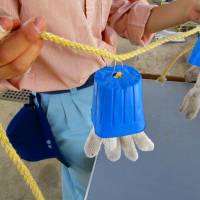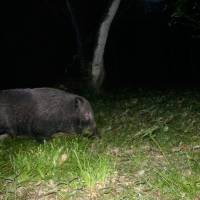A couple of weeks ago, I came home in the evening and found a wild boar on the porch. It had been bled and gutted, but otherwise it was still whole and hairy. I was very busy as I had to head off to Tokyo the next morning, but that present from some kindly local hunter in the Nagano Prefecture hills had to be dealt with.
As it was dark and wet outside, I manhandled the carcass into the kitchen and laid the boar out on a large cutting board on newspapers spread over the kitchen counter. Well, actually, it was a sow, a yearling of only around 30 kg — for which I was grateful, as an adult male could weigh 100 kg or more. I was also grateful that the missus wasn't home, because she might have freaked out. My two cats were just very curious.
When I process an animal I usually do it outside, hanging the beast from the beams of the roof over our outside sauna bath. They're easier to handle that way. However, I managed to skin and butcher my windfall porker with no great difficulty, then called my staffers to come and get their share. Later, they all agreed it was the tenderest wild meat they had eaten.
So for me, when I think of wild boar it's either ones for the pot I have in mind, or snuffly ones perkily rooting around in our woods. Not so for many farmers in Japan.
In the last Japan Times editorial I read on the subject, the amount of agricultural damage caused by deer and boar was estimated at more than ¥20 billion a year — and rising. Yes, I have broached this topic in this column several times, but please be patient because there's a whole new idea to combat this damage coming up — and it's come from high school girls!
At present, if you travel in the countryside in summer and autumn you will probably see lots of electric fences around fields of sweet corn, sweet potatoes, potatoes, melons and so on. They're put there in an effort to keep boar, bears and deer from tucking in.
If touched, these fences give quite a jolt, and when I was a boy growing up in Britain the farm next door used them. In that case there would be just one wire passing at waist height through loops on top of metal poles stuck in the ground. The fence was strung across a 2-acre (0.8-hectare) pasture, and it was moved along every couple of days so the cows grazed just one strip at a time instead of wandering around the whole field trampling half of it flat or into the mud.
Of course, I was warned not to touch that wire, but being a 10-year-old I just had to give it a try. When I did, I got a shock that made me yelp and jump, though it did no lasting harm. I later discovered that if I held somebody's hand and then touched the wire, the person I had grabbed would get a jolt — which I found most amusing.
However, if they are improperly rigged and maintained, electric fences like that can be dangerous, posing a possibly serious risk to small children, the elderly and people with heart problems.
So getting back to those high school girls ...
It happens that, for the past four years, I have been one of the judges involved in awarding high school students environmental prizes funded by Japan's biggest retail group, Aeon Co. Ltd. One of the prizes is the C.W. Nicol's Eye Prize (and I'm not giving you a sly wink when I tell you that, honest). There is also a Prime Minister's Prize and an Environment Ministry Prize, among others.
This year, under the direction of one of their teachers, Masaru Kobayashi, a class of students at Gunma Prefectural Tone Technical High School in Numata City's district of Tone has been tackling the problem of finding a safer way to protect crops than by using electric fences.
In several parts of Japan — as elsewhere in the world — people try using hot red pepper to keep out wild animals.
As wild boar have an acute sense of smell, and can even scent things buried quite deep underground and rootle them out with their snouts to eat, the students tried stuffing red peppers into the kind of cheap cotton work gloves commonly donned in all walks of life in Japan. Then they tied the gloves at 25- to 30-cm intervals and roughly the snout height of an adult porker to cords strung between poles stuck in the ground to form a small enclosure in woods the school owned.
To test their deterrent, they baited the enclosure with fruit and veggies, set up a flash-equipped, motion-sensitive camera and went away to await results, because wild boar are mainly nocturnal.
For a few days, the gloves did the trick. The boars would come up, then catch a whiff of the red pepper and veer away for less piquant pastures. Being intelligent animals, though, they soon got used to the smell and learned to ignore the fence and go straight to the grub.
After that, a group of girls in the class did some research and found that not only do wild boar have very small eyes for their size, but they don't see colors the way humans do.
Whereas we have trichromatic vision, which means we have three kinds of pigment cones in our eyes that combine to let us see colors as we do, they found that pigs have dichromatic vision, with just two types of pigment clones.
They also learned that a lot of research is being done on colors and lighting which can calm farmed pigs and enhance their growth and breeding — and it's been discovered that they see blue very clearly, even at night.
Armed with this knowledge, the students gathered a lot of those little blue plastic seedling pots that are discarded after planting. They put the wrist parts of the pepper-loaded work gloves into the pots and strung them on ropes at the same height, and again at 25- to 30-cm intervals. When I first saw the photographs I couldn't help smiling to myself. They looked like a line of miniature cow udders in blue skirts.
Once again the group made a roped enclosure in the woods and baited it. At the Aeon awards presentation of their project, they showed us video taken with a night-vision camera. In those images, the scenery was mostly greenish, but those hanging plastic pots appeared very bright and almost white, and we saw a few minutes' footage showing the wild boar clearly avoiding the pots, even though they were obviously interested in the food beyond.
Apparently the blue-pot fence remained effective for 120 days. The group also strung a similar fence around a paddy field that gets ravaged by wild boar year after year. That trial worked wonderfully, and kept the animals out until the rice was harvested.
Additionally, in a true scientific spirit the students reported how they tried making the fences using brown or black or red plastic pots of the same type — but only blue worked.
We had to sit for hours listening to presentations from 14 groups of students, with 10 minutes to question them afterward.
In my scribbled notes commenting on the Tone school's project, I wrote: "Looks more fun than making colored paper-chain decorations to hang at Christmas. Couldn't we get kids to do this at home and then all come together to hang them around fields and paddies?"
Seriously though, if these spicy udders-in-skirts fences really do work against wild boar, they will be easy to make and could be a meaningful environmental project for elementary school kids — and a lot safer and cheaper than electric fences.
Now that I've given up my vegetable patch, which is being turned into a horse paddock, I'm going to have to try persuading some farmers around here to try them out.
Oh, and by the way: Of course, the Tone students walked away from the Aeon awards with the C.W. Nicol's Eye Prize for 2015.




















With your current subscription plan you can comment on stories. However, before writing your first comment, please create a display name in the Profile section of your subscriber account page.